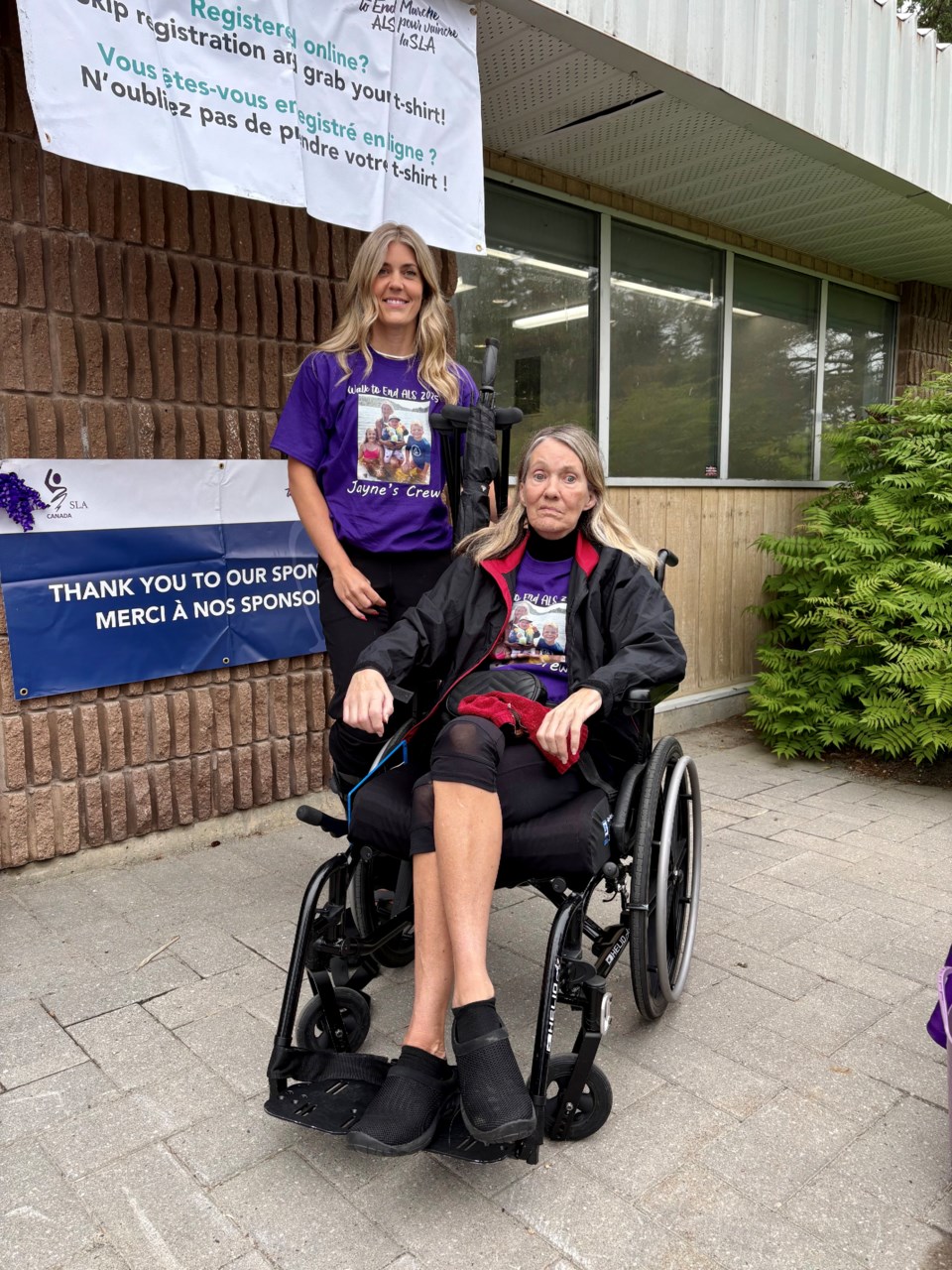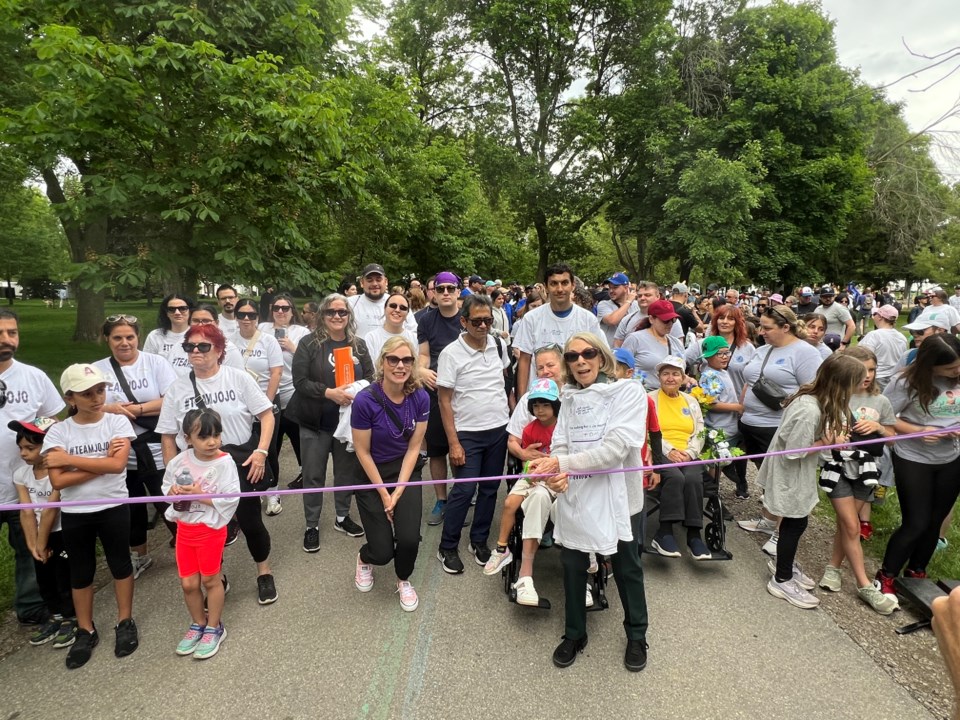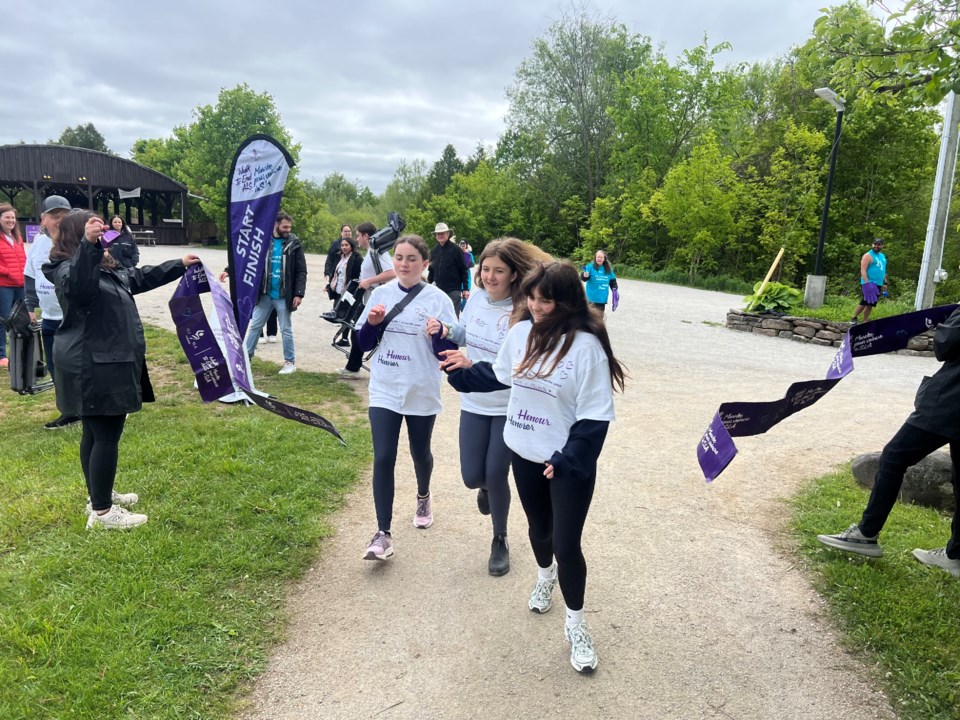According to Kim Barry, supporting someone living with ALS “takes a village” and it is these collective efforts that bring us closer to a world free of ALS.
Barry, Vice President of Community Services at the ALS Society of Canada (ALS Canada), leads a dedicated team of Community Leads who support the organization’s annual Walk to End ALS. The walks raise awareness and funds for people affected by Amyotrophic Lateral Sclerosis (ALS), a fast-moving neurodegenerative disease that gradually takes away a person’s ability to move, speak, and eventually, breathe.
Throughout June, the ALS Canada Walk to End ALS will take place in 22 communities across Ontario to raise $2 million. They’re closing in on that target, having collected nearly $1.7 million just weeks into the campaign.
The goal for the group is lofty, Barry said, but so is the need.
“It’s a hard disease to predict what is going to happen next,” Barry said. “For some individuals, by the time they receive a diagnosis of ALS, they’re already using a wheelchair or even entering palliative care.”
“There’s often a delay in accessing home care services, occupational therapists, and essential equipment.”
That gap between diagnosis and support can be devastating, Barry said. ALS Canada aims to bridge the gap with the support of Community Leads, who provide one-on-one assistance to individuals living with ALS and their families, helping them navigate health and community care. Additionally, ALS Canada offers an equipment loan program with more than 40 mobility and care items, all provided free of charge.

It’s a gap that Sudbury resident Jayne Munroe knows, all too well. Munroe began experiencing slurred speech in June 2024. By January 2025, she had an official diagnosis of ALS after a visit to Sunnybrook ALS Clinic in Toronto.
“The hardest part of receiving my diagnosis, as an exceptionally independent woman, was knowing it would progress over time and I would lose the ability to continue to be independent,” Munroe said.
“I lost the strength I once had to work in my yard and stay on the go. Before the diagnosis, I was a true ‘busy-body,’” she said. “But since my diagnosis, I have had a feeding tube procedure, as it was no longer safe to eat or drink by mouth.”
ALS Canada also supports families by providing up-to-date information on ALS, to take some of the guesswork out of the diagnosis.
“It’s about being proactive,” Barry said. “Sometimes we’re asking families to have really difficult conversations — about end-of-life care, about planning for a wheelchair even when they’ve just gotten used to a walker. It can often be a barrier.”
“But those early decisions can make a huge difference.”
For Munroe, the changes came quickly. First, she lost the ability to speak. That was followed by an inability to swallow. Simple things – chatting with neighbours or watching her grandchildren play – were suddenly taken from her.
“I miss having my grandkids stay with me and being able to care for them,” Munroe said. “I had to adapt to new ways of communication because of the loss of the ability to communicate verbally.”
“Some of the challenges I face include no longer being able to enjoy the taste of my favourite foods and not being able to tell my family I love them out loud.”
What adds urgency to their cause is ALS’s inevitable outcome,” Barry said.
“The disease is still 100 per cent terminal. Eighty per cent of people live only two to five years after diagnosis,” she said. “So there is urgency — for treatments, for research, and also for access to services.”
So far, according to the group, Canada is seen as a global leader in ALS research. In 2024, ALS Canada invested $2,214,000 in research to better understand and treat ALS.
That signifies progress, Barry said. She’s also hopeful thanks to developments in the country’s health care system. Health Canada recently approved a drug called Qalsody (tofersen), which has shown promise in slowing symptoms for people with a rare genetic form of ALS.
“When I started 12 years ago, there had been only one drug in two decades. Now we’re seeing changes.”
Another good sign: the Ontario government has made investments into ALS care, funding multidisciplinary teams at five ALS clinics across the province.
“That’s something we’ve advocated for the past two years,” Barry said. “Now someone in Ottawa will have access to the same level of care as someone in Toronto or London. That’s huge.”
As the group’s province-wide events help raise funds for research and services, Barry said she turns her attention to walking alongside families navigating the realities of the disease.
For that, she said, her approach is simple: show up, listen, and support.

“ALS Canada, specifically Shandel, our Community Lead in Sudbury, has provided a great deal of support and information about navigating the process for obtaining equipment and community support,” Munroe said. “ALS Canada has provided me with a wheelchair to help me get around.”
It’s that type of support that has allowed Munroe to remain as positive as she can, and participating in the ALS Canada Walk allows her to connect with a larger, supportive community.
“I’m happy to be able to participate in the ALS Canada Walk to End ALS because it brings awareness to this horrible disease,” she said. “I’m grateful to have so many friends and family walking with me and supporting me along the way. I am extremely grateful for everyone who has made a donation to my team or has taken the time out of their busy schedules to participate in the Walk.”
“I feel loved knowing I have people in my corner who have donated or participated,” Munroe said.
At the end of the day, the public has a crucial role to play.

Beyond raising money, creating more awareness and helping Canadians understand the human cost of ALS is what matters most.
“People don’t really know how devastating ALS is until it touches their family,” Barry said. “There are about 4,000 people in Canada living with ALS right now, but when you count their caregivers, spouses, children, and friends, the number affected is far greater.”
As walkers take to the streets and trails this month, they carry more than signs. They carry their own stories along with a united sense of purpose.
“Success, for us, is bringing the community together,” Barry said. “On the fundraising side we have a goal of $2 million and as of today, we're at $1.6 million. The community is generous, and they give back.”
“But success is also knowing that people have the support they need.”
